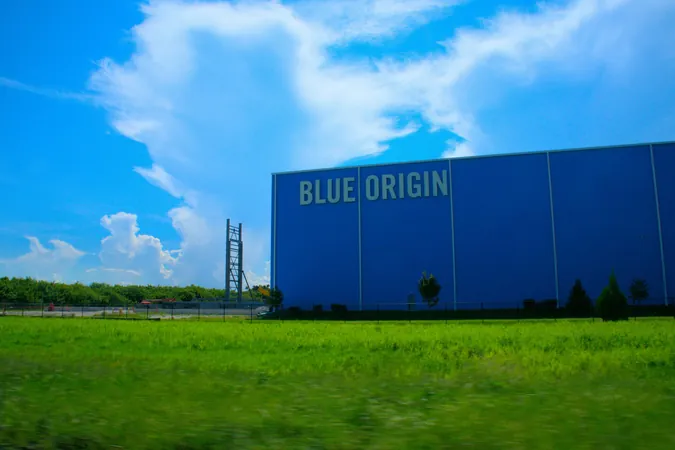
Revolutionary 3D-Printed Concrete Set to Transform Construction with Strength and Sustainability!
2024-10-28
Author: Jia
Introduction
In a groundbreaking development from the University of Virginia, a team of researchers has unveiled a 3D-printable concrete composite that could change the construction landscape forever. This innovative material combines graphene, limestone, and calcined clay cement (LC2) to produce a concrete that not only boasts superior strength and durability but also significantly reduces carbon emissions—an essential step towards more sustainable building practices.
Research Insights
Professor Osman Ozbulut from UVA’s Department of Civil and Environmental Engineering expressed, 'Our mission was to engineer a concrete that excels in performance while being environmentally friendly. The incorporation of graphene into LC2 cement is a game-changer, allowing us to minimize carbon emissions without sacrificing the robustness and adaptability required in 3D construction.'
The research team, which included doctoral candidates Tuğba Baytak and Tawfeeq Gdeh, conducted an in-depth study focusing on the flow properties, mechanical performance, and environmental impacts of this new material. By collaborating with experts at the Virginia Transportation Research Council (VTRC), they successfully harnessed graphene's exceptional mechanical properties to enhance the LC2 cement's performance for 3D printing.
Life Cycle Assessment and Environmental Impact
Baytak shared her enthusiasm, stating, 'This innovation paves the way for the future of construction, and I am honored to contribute to this transformative project.'
A pivotal component of their research involved a Life Cycle Assessment (LCA) spearheaded by postdoctoral researcher Zhangfan Jiang, alongside environmental engineering professor Lisa Colosi Peterson. The LCA findings were impressive, indicating that the graphene-infused LC2 concrete could reduce greenhouse gas emissions by around 31% compared to traditional 3D-printable concrete mixes.
Environmental Footprint Reduction
'Understanding the full environmental impact of this new concrete was crucial,' Jiang explained. 'It not only shows superior mechanical performance but also ensures a reduced environmental footprint, pushing the envelope for sustainability in 3D concrete construction compared to conventional methods that emit more carbon.'
Colosi Peterson remarked, 'It's gratifying to witness scientific advancements driving us toward greener construction methodologies.'
Real-World Applications
With the strategic partnership with VTRC, the UVA research team aims to explore the material’s potential in real-world applications, particularly in transportation infrastructure, showcasing the concrete's feasibility and effectiveness beyond just experimental settings. Ozbulut emphasized, 'The collaboration with VTRC was vital in uncovering the essential characteristics of this groundbreaking concrete.'
Gdeh added, 'Being part of a venture that touches on both the technical challenges of modern construction and the urgent need for sustainable materials is truly exhilarating.'
Conclusion
As the construction industry seeks to adapt to climate challenges, this innovative 3D-printed concrete technology emerges as a beacon of hope, promising a greener and more resilient future. Could this be the beginning of a new era in sustainable construction? The answers may lie within the walls of this cutting-edge material!


 Brasil (PT)
Brasil (PT)
 Canada (EN)
Canada (EN)
 Chile (ES)
Chile (ES)
 Česko (CS)
Česko (CS)
 대한민국 (KO)
대한민국 (KO)
 España (ES)
España (ES)
 France (FR)
France (FR)
 Hong Kong (EN)
Hong Kong (EN)
 Italia (IT)
Italia (IT)
 日本 (JA)
日本 (JA)
 Magyarország (HU)
Magyarország (HU)
 Norge (NO)
Norge (NO)
 Polska (PL)
Polska (PL)
 Schweiz (DE)
Schweiz (DE)
 Singapore (EN)
Singapore (EN)
 Sverige (SV)
Sverige (SV)
 Suomi (FI)
Suomi (FI)
 Türkiye (TR)
Türkiye (TR)
 الإمارات العربية المتحدة (AR)
الإمارات العربية المتحدة (AR)